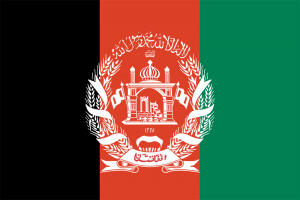Language/Central-pashto/Vocabulary/Introducing-Yourself
| ◀️ Basic Greetings — Previous Lesson | Next Lesson — Subject Pronouns ▶️ |
Overview[edit | edit source]
In this lesson, you will learn how to introduce yourself and ask for someone's name in Central Pashto. You will practice pronunciation and learn appropriate responses to introductions. By the end of the lesson, you will be able to confidently introduce yourself and initiate a conversation in Pashto.
Vocabulary[edit | edit source]
Here are some key vocabulary words that you will encounter in this lesson:
| Central Pashto | Pronunciation | English Translation |
|---|---|---|
| سلام | /salaam/ | hello/greetings |
| ښه راغلی | /sha raghley/ | how are you? |
| مننه | /mana/ | thanks |
| نوم | /nuum/ | name |
| زه | /zə/ | I/me |
| ستا | /sta/ | you (formal or elder) |
| ته | /ta/ | you (informal or younger) |
Grammar[edit | edit source]
When introducing yourself, there are a few important grammar rules to keep in mind. Firstly, in Central Pashto, the verb "to be" is typically omitted when introducing oneself or asking for someone's name. Secondly, the word order is usually Subject-Object-Verb (SOV), meaning that the subject of the sentence comes first, followed by the object and then the verb.
Here are a few examples:
- زه محمد يم (Za Mohammad yam) – I am Mohammad
- نوم ته څوک دی؟ (Nuum ta tsok dai?) – What is your name? (informal)
- نوم ستا څوک دی؟ (Nuum sta tsok dai?) – What is your name? (formal/elder)
Notice that in the above examples, the verb "to be" is omitted and the subject comes first, followed by the object and then the verb.
Dialogue[edit | edit source]
Here is an example dialogue between two individuals meeting for the first time:
- Person A: سلام، ښه راغلی؟ (Salaam, sha raghley?) – Hello, how are you?
- Person B: موږ ښه یو (Mwa sha yo) – I am fine.
- Person A: زه محمد يم، نوم ته څوک دی؟ (Za Mohammad yam, nuum ta tsok dai?) – I am Mohammad, what is your name?
- Person B: زه سیف الله يم، مننه. (Za Seifullah yam, mana) – I am Seifullah, thank you.
Practice[edit | edit source]
Practice introducing yourself and asking for someone's name using the vocabulary and grammar rules that you have learned. Try to imitate the pronunciation as closely as you can. Here are a few phrases to get you started:
- زه ___ يم (Za ___ yam) – I am ___
- نوم ته څوک دی؟ (Nuum ta tsok dai?) – What is your name?
- نوم من ___ دی (Nuum man ___ dai) – My name is ___
You can also try introducing yourself to a partner and engaging in a conversation. Use the appropriate greetings and introduce some basic information about yourself, such as your profession or where you are from.
Cultural Insight[edit | edit source]
In Pashtun culture, greetings and introductions are highly valued and seen as an essential part of social interaction. When greeting someone, it is customary to use formal language, especially when talking to elders or people in positions of authority. It is also important to engage in small-talk before getting into the main topic of conversation, as this shows respect and builds rapport.
When introducing oneself or asking for someone's name, it is common to include one's tribal affiliation, which can provide important cultural context. For example, one may say "My name is Abdul, son of Khaliq, from the Yusufzai tribe."
Conclusion[edit | edit source]
In this lesson, you have learned how to introduce yourself and ask for someone's name in Central Pashto. You have practiced pronunciation and learned appropriate responses to introductions. Remember to use formal language when necessary and engage in small-talk before getting into the main topic of conversation. With these skills, you will be able to confidently initiate a conversation and start making meaningful connections in Pashtun culture.
Now that you've completed this lesson, don't stop learning! Check out these related topics: Computer & Languages jeba lesanewnh ژبی (لسانونه).
Other Lessons[edit | edit source]
- State Verbs
- Weather and Climate
- Vegetables
- Locations
- Transportation
- Directions
- Household Chores
- Modes of Transportation
- Languages jeba lesanewnh ژبی (لسانونه)
- Numbers 11 20
| ◀️ Basic Greetings — Previous Lesson | Next Lesson — Subject Pronouns ▶️ |

